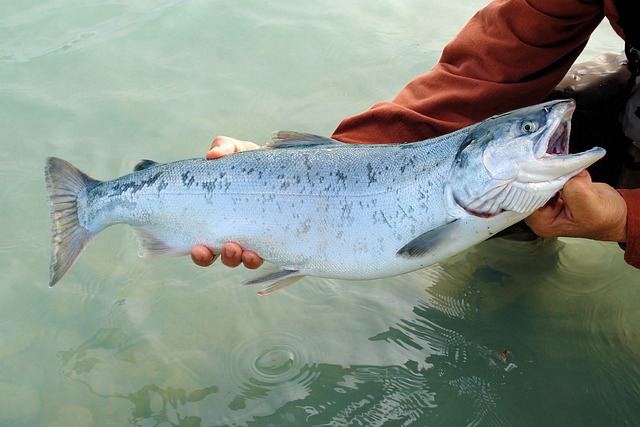
Salmon is widely recognized as a potent source of nutrition, with research suggesting that consuming fish, particularly omega-3-rich varieties like salmon, can have a positive impact on overall health. Many experts have delved into the reasons behind salmon’s reputation as a nourishing and disease-fighting food. Let’s explore their insights.
Salmon Nutrition
According to the United States Department of Agriculture (USDA), a serving of cooked wild salmon, weighing approximately 3 ounces, offers the following nutritional benefits:
- Calories: 155
- Protein: 22 g
- The amount of fat in this product is
- The amount of carbohydrates in this product is zero
- Fiber: 0 g
- Sodium: 48 mg
- Vitamin B12 is present in a quantity of 2.6 milligrams
- Potassium: 534 mg
- Selenium: 40 mcg
- Omega-3s: 1.5 g
Salmon: A Nutritional Powerhouse
Salmon is a highly nutritious food that provides numerous health benefits. Let’s explore its remarkable advantages.
Provides an abundance of Omega-3 Fatty Acids
Fat plays a crucial role in maintaining human health, as it facilitates the absorption of specific nutrients, safeguards vital organs, supplies energy, and offers various other benefits. The consumption of fat is essential for the proper functioning of the body, but it’s important to consider the type of fat you intake.
Unsaturated fat, which is found in high quantities in salmon, offers significant advantages for our health. According to Maya Feller, M.S., RD, the author of Eating from Our Roots, salmon is rich in omega-3 fatty acids, a type of polyunsaturated fat. Omega-3 fats are classified as essential because our bodies are unable to produce them, necessitating their inclusion in our diet. Feller highlights the extensive range of benefits associated with polyunsaturated fat, including inflammation reduction, blood pressure regulation, and decreased risk of certain cancers.
According to The National Institutes of Health (NIH), it is advised for women to consume a daily intake of omega-3 fats ranging between 1.1 grams to 1.4 grams, whereas men should aim for 1.6 grams per day. The NIH also states that a 3-ounce serving of cooked salmon typically contains approximately 1.5 to 2 grams of omega-3 fats. To find out the most best maldon smoked salmon then see here.
Rich in Protein
Salmon is not only high in fat but also a great source of protein, as stated by Jenny Shea Rawn, M.P.H., RD, the author of Coastal Kitchen. A serving of 3 ounces of salmon contains approximately 22 grams of protein. According to a study published in the Journal of Obesity & Metabolic Syndrome in 2020, a diet rich in protein, which includes salmon, may aid in weight loss and help prevent obesity.
Provides Vitamin B12
A knowledgeable audience, in a neutral and general context, aims to inform the reader about the vitamin B12 content in A 3-ounce portion of salmon. According to the NIH, this portion provides 2.6 micrograms of vitamin B12, exceeding 100% of the daily requirement for this nutrient. Vitamin B12 plays a crucial role in nerve function, red blood cell formation, and DNA synthesis.
Supplies a Variety of Minerals
Salmon also provides a wide range of essential nutrients, as highlighted by integrative and functional dietitian Robin Foroutan, M.S., RDN. These include iodine, potassium, and selenium, which all contribute to various aspects of our health. Iodine, for instance, supports the proper functioning of the thyroid, while potassium helps regulate blood pressure. Additionally, selenium acts as an antioxidant, aiding in the prevention of free radical damage.
Rich in Antioxidants: A Wealth of Antioxidant Content
Wild-caught salmon is rich in astaxanthin, a natural red pigment responsible for its vibrant color. Astaxanthin possesses both antioxidant and anti-inflammatory properties. Incorporating foods containing this compound into your diet may have positive effects on skin health, offering protection against harmful UV rays and free radicals. This information is based on a 2018 study published in Nutrients.
